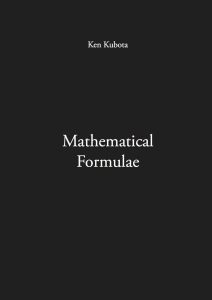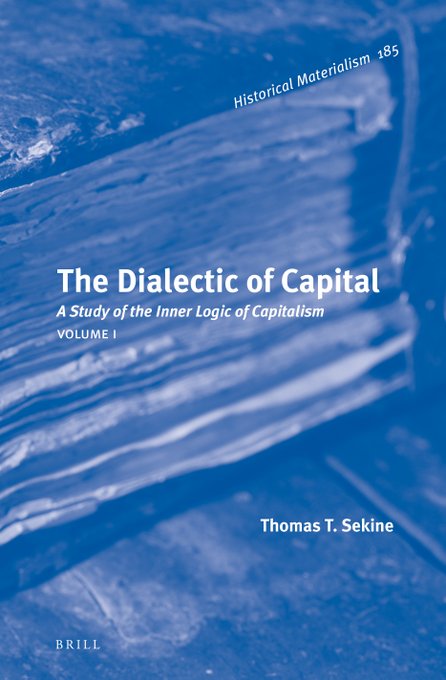 Dear Members of the Research Community,
Dear Members of the Research Community,
I am pleased to announce the publication of the mathematical logic R0, a further development of Peter B. Andrews’ logic Q0. The syntactic features provided by R0 are type variables (polymorphic type theory), the binding of type variables with the abstraction operator and single variable binder λ (type abstraction), and (some of) the means necessary for dependent types (dependent type theory).
The publication is available online at
http://www.owlofminerva.net/files/formulae.pdf
The introduction can be found on pp. 11 f.
A printed copy can be ordered with ISBN 978-3-943334-07-4. The software implementation is expected to be published in due course. For more information, please visit: http://doi.org/10.4444/100.3
The expressiveness of the formal language obtained with type abstraction allows for a natural formulation of group theory [cf. p. 12 of http://www.owlofminerva.net/files/formulae.pdf]. With the set (type) of Boolean values o, the exclusive disjunction XOR, and an appropriate definition of groups Grp [p. 362], the fact that (o, XOR) is a group can be expressed in lambda notation with [p. 420]
Grp o XOR
This enhancement of the expressiveness of the formal language overcomes the
“limitation of the simple HOL type system […] that there is no explicit quantifier over polymorphic type variables, which can make many standard results […] awkward to express […]. […] For example, in one of the most impressive formalization efforts to date [Gonthier et al., 2013] the entire group theory framework is developed in terms of subsets of a single universe group, apparently to avoid the complications from groups with general and possibly heterogeneous types.” [Harrison, Urban, and Wiedijk, 2014, pp. 170 f.]
Furthermore, the enhanced expressiveness provided by R0 avoids the circumlocutions connected with preliminary solutions like axiomatic type classes recently developed and discussed for Isabelle/HOL. The expressiveness of type abstraction also replaces the notion of compound types, which in HOL are used for ordered pairs (the Cartesian product, see section 1.2 of http://freefr.dl.sourceforge.net/project/hol/hol/kananaskis-11/kananaskis-11-logic.pdf), that in R0 can be formalized without compound types [cf. pp. 378 f. of http://www.owlofminerva.net/files/formulae.pdf].
Mike Gordon’s HOL developed at Cambridge University is, like Andrews’ logic Q0, based on the Simple Theory of Types (1940) developed by Alonzo Church, Andrews’ Ph.D. advisor at Princeton University. Among the HOL group, there has always been the awareness that besides automation, there is the philosophical (logical) desire to reduce the means of the logic to a few principles. In the HOL handbook, Andrew M. Pitts wrote the legendary sentence:
“From a logical point of view, it would be better to have a simpler substitution primitive, such as ‘Rule R’ of Andrews’ logic Q0, and then to derive more complex rules from it.” [Gordon and Melham, 1993, p. 213]
In the same spirit, Mike Gordon wrote on the genesis of HOL:
“[T]he terms […] could be encoded […] in such a way that the LSM expansion-law just becomes a derived rule […]. This approach is both more elegant and rests on a firmer logical foundation, so I switched to it and HOL was born.” [Gordon, 2000, p. 173]
The general principle of reducing the logic (including the language) to a few principles is the main criterion for the design of Q0 (having only a single primitive rule of inference, Rule R), which is summarized by Peter B. Andrews as follows:
“Therefore we shall turn our attention to finding a formulation of type theory which is as expressive as possible, allowing mathematical ideas to be expressed precisely with a minimum of circumlocutions, and which is as simple and economical as is possible without sacrificing expressiveness. The reader will observe that the formal language we find arises very naturally from a few fundamental design decisions.” [Andrews, 2002, pp. 205 f.]
R0 “follows Andrews’ concept of expressiveness (I also use the term reducibility), which aims at the ideal and natural language of formal logic and mathematics.” [p. 11 of http://www.owlofminerva.net/files/formulae.pdf]
Like John Harrison’s HOL Light, R0 has an extremely small kernel. R0 resembles Norman Megill’s Metamath, which “attempts to use the minimum possible framework needed to express mathematics and its proofs.” (http://us.metamath.org/) For the same reason, R0 is, unlike most other systems, a Hilbert-style system.
R0 uses, like Q0, the description operator, avoiding the problems of the epsilon operator already discussed by Mike Gordon himself for HOL: “It must be admitted that the ε-operator looks rather suspicious.” [Gordon, 2001, p. 24] “The inclusion of ε-terms into HOL ‘builds in’ the Axiom of Choice […].” [Gordon, 2001, p. 24]
Unlike in Coq, in R0, the Curry-Howard isomorphism is not used, favoring a direct (unencoded) expression rather than the encoding of proofs. For the same reason, it is an object logic and not a logical framework (such as Larry Paulson’s Isabelle and Norman Megill’s Metamath). Like Cris Perdue’s Prooftoys (http://prooftoys.org, http://mathtoys.org) – a natural deduction variant of Andrews’ Q0 – in R0, the turnstile symbol is replaced by the logical implication [p. 12].
Kind regards,
Ken Kubota
____________________
Ken Kubota
http://doi.org/10.4444/100
References
Kubota, Ken (2017), Mathematical Formulae. Available online at http://www.owlofminerva.net/files/formulae.pdf (April 9, 2017). SHA-512: 2ca7be176113ddd687ad8f7ef07b6152 770327ea7993423271b84e399fe8b507 67a071408594ec6a40159e14c85b97d2 168462157b22017d701e5c87141157d8. ISBN: 978-3-943334-07-4. DOI: 10.4444/100.3. See: http://doi.org/10.4444/100.3
For further references, please see
http://www.owlofminerva.net/files/fom.pdf (direct link)
http://doi.org/10.4444/100.111 (persistent link)


